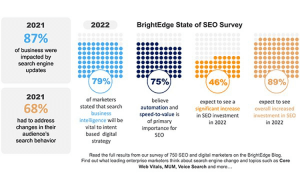— August 28, 2019

As digital transformation continues to spread, more and more organizations are adopting Agile and asking for help—help with execution strategies, communicating the benefits to stakeholders, and with understanding the best place to start. Below are some of the benefits of Agile and how to measure them.
The Benefits
Oftentimes, we try to help organizations adopt an agile mindset and work in an agile way when they haven’t done it before. If you are considering shifting to Agile, what are some of the positive benefits you can expect to see? Here are some of the most common advantages:
- Improved Employee Morale
At the core of agile is letting people do the work they want to do, which in a technology organization is usually to build software products and platforms. This alone helps to make agile development attractive to more people. But, also, because input is sought from all levels of stakeholders before decisions and commitments are made, team members feel more ownership of their work. - Improved Productivity
With improvements in morale come improvements in energy, greater engagement, and more hard work to get things done. By implementing agile development, precious hours and days are better spent and more work is accomplished. - Happier Customers
With improved productivity comes more features, sooner and better, leading to improved customer value. When you deliver more value to your customers it makes them happier. - Less Finger Pointing
Greater buy-in and productivity means there is less finger-pointing and concern about making mistakes, mistakes are a part of agile development. Requirements documents and fixed budgets don’t take away risk; they only make it more likely that projects will fail and that people will blame others. - More Failure, Sooner
By failing more and in smaller amounts, you can avoid failing in large ways later on.
But, of course, for all these touted benefits of agile (among others) how do you know if it’s working?
Measuring the Benefits
Improved productivity should be something that you can directly monitor using Agile itself, since a good scrum master will keep tabs on velocity and will be able to see if, over time, teams are increasing their throughput. There are many variables here and knowing that you’re making progress on delivering more features takes some careful thought—consistent processes and estimation using story points can help set you on the right path.
We’ve also seen a number of clients looking into value stream management tools, which can help keep track of the value you are creating for customers and show how your software is delivering that value for their business.
Customer satisfaction is hopefully something you are already measuring. If you aren’t, you should start taking a look at customer satisfaction so that you can be sure that you are improving it over time. Delivering new features is key to keeping existing customers happy and also key to bringing in new clients and staying ahead of the competition.
Employee satisfaction is also something that many people measure already, turnover statistics and 360 reviews should be keeping you on the pulse of what is happening within your organization.
Finger-pointing and failure are perhaps harder to measure, they may show up in employee satisfaction (finger-pointing) and customer satisfaction (more failure, sooner). But these are indirect measures. Proper use of sprint retrospectives could help both of these—understanding what didn’t work and changing it is part of the agile culture. There are a number of tools to help manage retrospectives. Again, if these are currently part of your development culture, a good scrum master should be able to come up with a program
Even though agile software development has been around for over a decade, many organizations are still struggling to adopt it successfully. There are some major benefits when it comes to employee satisfaction and helping the bottom line, and being able to measure these benefits can be the key to success. In many cases, it can be helpful to bring in a partner to implement an agile strategy, a partner that has scrum masters on hand to keep the journey on track.
This post was originally published here.
Business & Finance Articles on Business 2 Community
(17)





